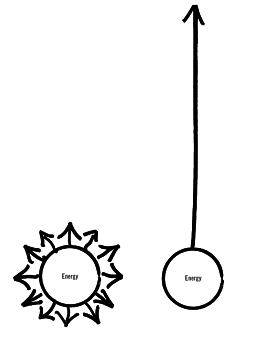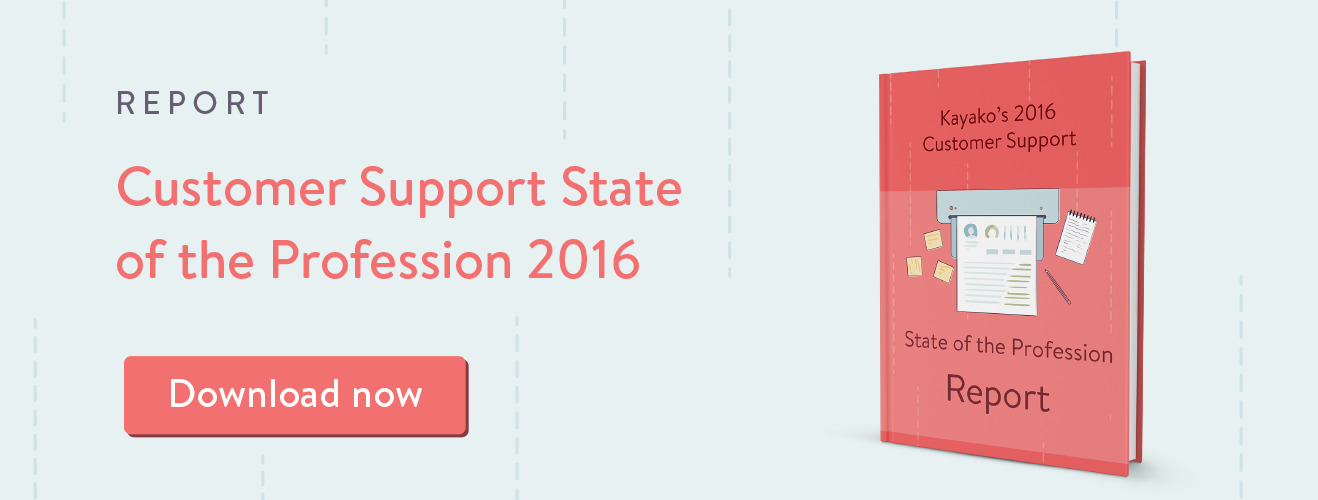Focus is precious, especially for a growing business. Focus is the only way a business can differentiate, by repeatedly delivering perfectly crafted experiences to the perfectly fitting customer. One of the biggest detractors of focus is wrong-fit customers.
How do you know a customer is wrong for your business?
For one, they cost you more than they bring in. Your team ends up spending a disproportionate time with a wrong-fit customer, whether that is giving attention to customers who are frustrated that they can’t do what they want to do, or helping them figure out crazy workarounds.
A wrong-fit customer chose you and bought your product for the wrong reasons, use your product in a way you don’t fully support and make demands that you aren’t necessarily set up to deliver on.
Put simply, it’s a lose-lose relationship.
The wrong kind of customer takes away your focus

At Kayako, we’ve suffered greatly from selling to wrong-fit customers in the past. We tried to be something to everyone because we didn’t want to miss out.
While we have many enterprise customers who use Kayako successfully and in really amazing and effective ways, serving small and medium size businesses (SMBs) is what we are geared up to do best.
I recall one instance in the early days where a large enterprise customer (let’s call them BigCo) approached our sales team eagerly. They wanted to use Kayako to serve internal employees – easy enough, right?
BigCo, however, had only one objective: HR workflow. Their requirements certainly stretched the limits of Kayako’s workflow functionality. There are powerful workflow tools built in to Kayako to help businesses handle customer requests at scale. These same tools can be used in other ways – some of our customers also use Kayako for bug tracking, change management and approvals.
For BigCo, our awesome support team prepared creative use cases and presented them to BigCo’s evaluation team. They showed them that they could (with workarounds – “you could do that if you twist this knob, put this thing there…”) achieve their stated requirements with Kayako.
All the boxes got ticked, and BigCo signed up to Kayako with a significant contract. It was a big win for the team.
But fast forward three months later, and that big win wasn’t feeling so great anymore. Yes, BigCo were able to achieve their stated requirements with Kayako three months ago, but requirements can change. And requirements did change.
It became clear to BigCo that while their evaluation team had ticked all the boxes, Kayako couldn’t adapt with BigCo, because Kayako wasn’t built to do what they wanted.
BigCo blamed us: they felt Kayako was missold to them. They felt cheated and they were angry. We were flooded with feature requests and implementation demands, which while they would be useful to BigCo, were pretty much useless to the rest of our customers.
Say hello to burnout
It turns out that there’s a real, quantifiable impact when support reps are paired with unresolvable cases. Their moods turn negative. They start taking fewer calls. They take more breaks.
Supporting the wrong kind of customer means starting on the back foot on every request and interaction. Because there is a fundamental mismatch between what the customer expects and what we’re able to deliver to the customer, the support team loses their empowerment. It becomes that much more difficult for the support rep to be the customer’s advocate and deliver success to the customer.
This paints a grim scene: burned out support reps, resentment, interpersonal friction and an unmistakable dent in productivity. Working with a stream of impossibly demanding customers day in, and day out would drain anyone’s emotional energy and enthusiasm.
Our support and product team had their attention taken up by BigCo firefighting: talking to and calming down angry administrators, building features features for BigCo, trying our best to keep BigCo with us. They were unhappy to be with us, and we were unhappy that we simply couldn’t turn BigCo into a happy customer.
The cost of a square peg in a round hole
All this distraction was a big sacrifice: we had a big contract in hand, sure. But we were spending way less time building value that would help our many other customers advance.
Where did we go wrong? We showed everything BigCo could do with Kayako, but we didn’t have the conversation about what would be best for BigCo’s goals. We didn’t take the time to learn about their future plans. We ignored all the warning signs that BigCo was trying to fit a square peg in a round hole, and we were helping them mash it in.
After a frank and amicable conversation with BigCo, we parted ways on good terms. While we didn’t cut the cord immediately, we did have to fire our customer. We gave BigCo the option of ending their contract early, and gave them all the support they needed to migrate onto a better fitting, specialised platform.
Customer centricity doesn’t mean trying to be everything to everyone
 High performing, customer centric companies don’t bend over backwards to create imaginative workarounds and new features for each and every customer. They don’t allow themselves to pull in all directions at once.
High performing, customer centric companies don’t bend over backwards to create imaginative workarounds and new features for each and every customer. They don’t allow themselves to pull in all directions at once.
Instead, the best companies relentlessly focus. They focus on their ideal customer and on building an offering that suits them perfectly by giving the customer the shortest path to success. Focusing energy in one direction means you can go a lot further.
Wistia knew this from the get-go, and even helps customers find an alternative if they’re not the right fit. Dave Cole, Wistia Support Pro says:
“We have a clear sense of the type of customers our product is built for. And if our product is not a good fit for certain potential customers, that’s OK!
It’s better to help them find a different service that better suits their needs than to try and make them happy with Wistia. If we worked tirelessly to serve all the people interested in Wistia, we’d end up having a customer base comprised of people with extremely disparate needs, and we’d be dead in the water.”
In other words, if they’re not the right customer for Wistia, they don’t try to keep them. There is no benefit to either side.
Don’t cast a wide net for customers – fish for your ideal ones
There’s one great way to attract the ideal customer and keep everyone else at bay: talk straight to them.
Unbounce talks straight to their ideal customer in their marketing, and with great results. Check out the strong, clear messaging they’ve developed on their homepage.
Who is Unbounce for? Marketers who want or need to build landing pages without an IT team. Their CTA (“Build a high-converting landing page now”) speaks to a customer who needs to convert customers fast.
Everything Unbounce does is targeted to digital marketers – their blog full of helpful conversion tips, the Call-to-Action podcast, and their resource center. They’ve effectively built a tribe of conversion-driven marketers, and it works perfectly for them.
A landing page product could be pulled in a lot of directions. After all, a developer or a designer’s ideal landing page tool would probably look different. It’s clear that Unbounce isn’t for them.
Conclusion
Listen to those warning signs in early sales conversations. If you feel like you’re bending too much, you probably are. Invest time in understanding your customer’s future plans and goals with your solution, and not just today’s requirements. Success is not achieved when you make that sale; the hard work is up ahead.
Set your business up to help your customers achieve success by understanding your ideal customer, and learning when to say no to wrong-fit customers. Your team will thank you for it! And that’s what a win-win relationship looks like.
